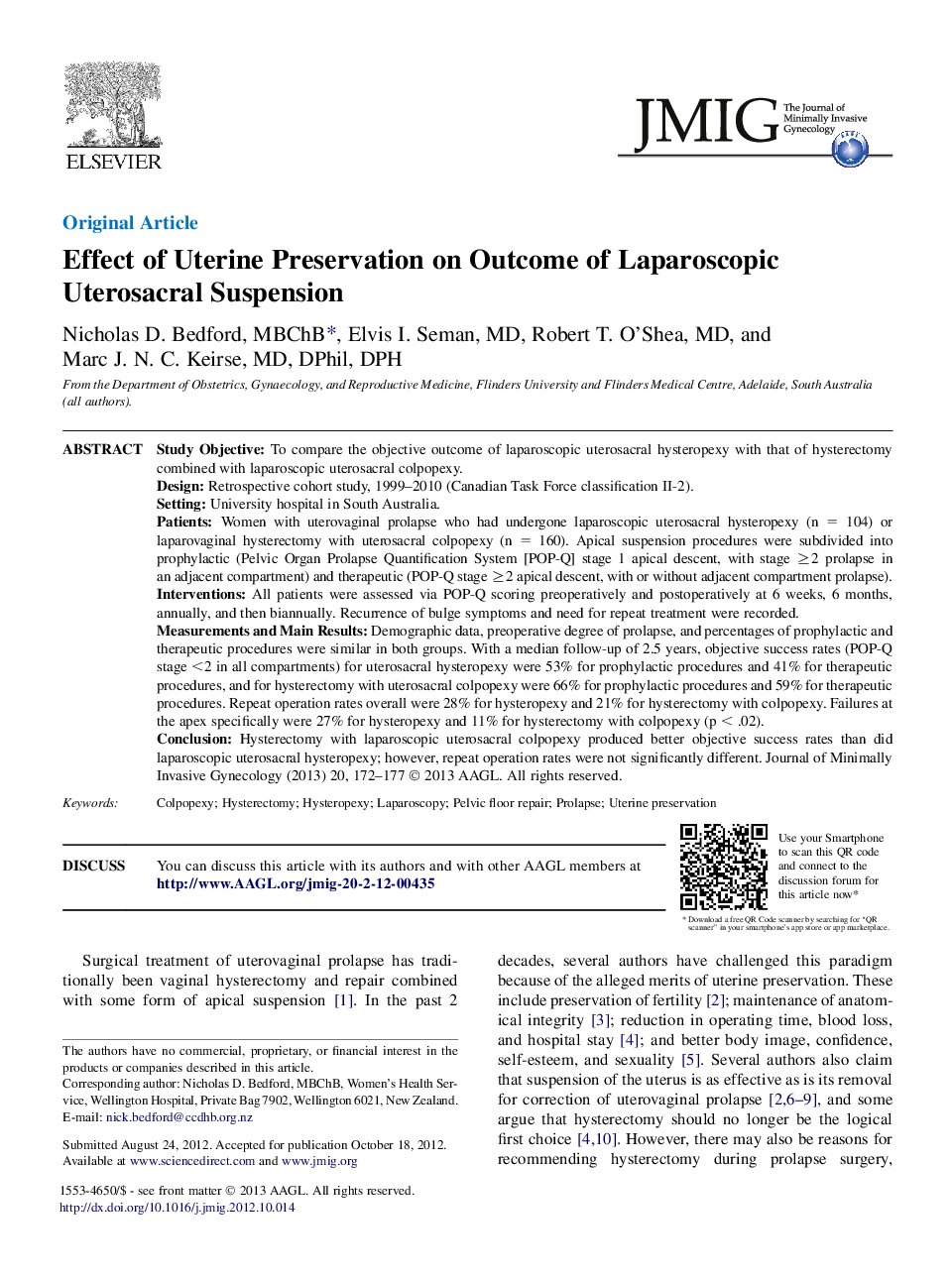| Article ID | Journal | Published Year | Pages | File Type |
|---|---|---|---|---|
| 3954707 | Journal of Minimally Invasive Gynecology | 2013 | 6 Pages |
Study ObjectiveTo compare the objective outcome of laparoscopic uterosacral hysteropexy with that of hysterectomy combined with laparoscopic uterosacral colpopexy.DesignRetrospective cohort study, 1999–2010 (Canadian Task Force classification II-2).SettingUniversity hospital in South Australia.PatientsWomen with uterovaginal prolapse who had undergone laparoscopic uterosacral hysteropexy (n = 104) or laparovaginal hysterectomy with uterosacral colpopexy (n = 160). Apical suspension procedures were subdivided into prophylactic (Pelvic Organ Prolapse Quantification System [POP-Q] stage 1 apical descent, with stage ≥2 prolapse in an adjacent compartment) and therapeutic (POP-Q stage ≥2 apical descent, with or without adjacent compartment prolapse).InterventionsAll patients were assessed via POP-Q scoring preoperatively and postoperatively at 6 weeks, 6 months, annually, and then biannually. Recurrence of bulge symptoms and need for repeat treatment were recorded.Measurements and Main ResultsDemographic data, preoperative degree of prolapse, and percentages of prophylactic and therapeutic procedures were similar in both groups. With a median follow-up of 2.5 years, objective success rates (POP-Q stage <2 in all compartments) for uterosacral hysteropexy were 53% for prophylactic procedures and 41% for therapeutic procedures, and for hysterectomy with uterosacral colpopexy were 66% for prophylactic procedures and 59% for therapeutic procedures. Repeat operation rates overall were 28% for hysteropexy and 21% for hysterectomy with colpopexy. Failures at the apex specifically were 27% for hysteropexy and 11% for hysterectomy with colpopexy (p < .02).ConclusionHysterectomy with laparoscopic uterosacral colpopexy produced better objective success rates than did laparoscopic uterosacral hysteropexy; however, repeat operation rates were not significantly different.
